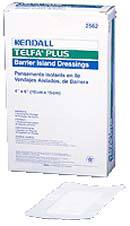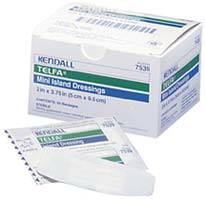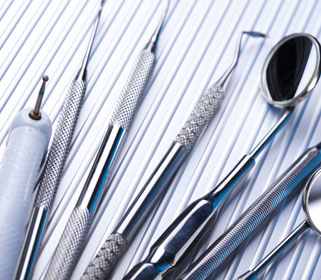Home » Emergency Medical Supplies » Other Skin Diseases & Skin Disorders » Other Skin Diseases & Skin Disorders
Other Skin Diseases & Skin Disorders

Telfa Plus Barrier Island Dressing
Retail Price: $118.09
Your Price: $97.37
 Unit: 15/ pack
Unit: 15/ pack

Stratasorb Composite Island Dressing
Retail Price: $45.67
Your Price: $34.76
 Unit: 10/box
Unit: 10/box

Tefla Adhesive Island Dressing
Retail Price: $19.81
Your Price: $14.65
 Unit: 50/box
Unit: 50/box
Skin Diseases & Disorders.
Sun Damage
Overexposure to the sun’s ultraviolet (UV) radiation may cause skin damage that begins at in early childhood. Premature skin aging can be avoided by protecting the skin from sun damage. Sun overexposure can also increase the likelihood of eye damage from cataracts, pterygium (tissue growth that blocks vision), skin cancer around the eyes and macular degeneration. Eyes and skin should be protected from the sun’s UV rays at all times. Children’s skin should always be protected with clothing and sunscreen to avoid skin damage. Sunburn can occur in cold climates in the winter as well as in tropic summer climates.
Dry Skin
Dry skin usually runs in families and is worse in winter when cold air and dry indoor heating systems exacerbate skin dryness. Dry skin can itch and flake, but can be soothed by moisturizing soaps, creams and lotions. Wash the skin with lukewarm, not hot, water. Avoid harsh deodorant soaps in favor of mild skin moisturizing soaps. Apply moisturizer to skin after baths and showers to seal in the water and to alleviate dry skin. Always use sunscreen. Protect dry lips with ointment. Consider using a humidifier in the home.
Blisters
Skin blisters are caused by friction of the skin on the feet moving against shoes and socks. To prevent blisters, athletes may coat their feet with petroleum jelly, apply antiperspirant to the soles of the feet or switch from cotton to acrylic socks.
Rosacea
Rosacea (acne rosacea) is a chronic skin inflammation, usually involving the cheeks, nose, chin and forehead. Rosacea occurs more often in fair-skinned people between ages 30-50. Rosacea causes enlargement of blood vessels of the skin and skin eruptions. Treatment includes oral antibiotic medication for skin eruptions, vitamin A medications or anti-fungal medications, topical anti-fungal, antibiotics or steroids and laser therapy to eliminate blood vessels just under the skin.
Psoriasis
Psoriasis tends to run in families and causes dry, crusty, red skin. Psoriasis is not contagious and can be treated with oral medication, medicated skin creams or skin lotions and light therapy.
Bacterial Skin Diseases
Acne—not just a teenage skin problem, acne is caused by hormones increasing the skin’s oil production. Oily skin is more prone to acne bacterial infection (pimples) and clogged pores (blackheads and whiteheads). Acne occurs most often during puberty and when hormone levels change in adults in their late 30s and 40s. Oily skin may be controlled through frequent washing with mild soap and water, using only water-based cosmetics and avoiding skin moisturizing lotions. When acne cannot be controlled by frequent skin cleansing, application of benzoyl peroxide lotions or over-the-counter skin medication, acne can be treated by a dermatologist with antibiotics and other medications.
Boils—skin infections caused by bacteria, usually at the site of a hair follicle. Boils are quite painful and should be treated by medical professionals to avoid spreading the bacteria under the skin.
Acne Mechanica—acne on parts of the body in contact with sports equipment, such as helmets and pads. Wearing clean, cotton tee shirts under equipment may prevent this condition. Washing and using a benzoyl peroxide solution may also alleviate the condition.
Dermatitis
Any skin rash may be referred to as dermatitis. Skin rashes have numerous causes and include:
Scalp Dermatitis — rash causing the skin around the hairline, neck and eyebrows to itch and flake.
Allergic Contact Dermatitis—rashes and hives that are allergic skin reactions to contacting metal jewelry, poisonous plants (poison ivy or poison oak), rubber or latex, makeup or perfumes, chemicals, laundry soap or other substances. Allergic dermatitis caused by poison ivy, poison oak or poison sumac should be treated immediately to avoid complications such as swelling of airways or anaphylactic shock in extreme cases. Treatment includes disposal of clothing and any contaminated outdoor gear. Oral steroid medications and skin ointments may be necessary for relief of swelling and itching. Never burn poisonous plants since inhaling the smoke can be just as serious as touching the plants.
Eczema—a form of dermatitis that causes the skin to be red, itchy and scaly with oozing blisters. Eczema is often a reaction to a skin allergen and may be treated with skin ointment, skin creams or oral medication. It is important to find the source of contact dermatitis and remove or avoid the allergen.
Scabies—caused by mites that burrow under the skin. Scabies cause terrible skin itching, with hive-like bumps that may develop into crusty or scaly skin. Treatment includes applying creams and lotions to affected areas, washing all clothing, bed linen and towels in hot water and vacuuming the entire house and disposing of the vacuum bag. All family members must be treated to avoid reinfection.
Head Lice—insects that are transferred from child to child via combs, brushes, hats or close play. Treatment involves using special shampoo and combing out lice eggs (nits). Bed linens throughout the home should be washed in hot water.
Viral Skin Diseases and Disorders
Warts—caused by skin viruses, warts commonly occur on the skin of the fingers and hands. Plantar warts grow on the soles of the feet and can be quite painful. Warts can be removed with liquid nitrogen, heat or injections. Some warts go away without treatment.
Shingles—caused by the same virus as chicken pox, shingles is an inflammation of nerve tissue. Shingles can cause severe pain and skin lesions. Immediate treatment with anti-viral medication should begin with the first symptoms.
Fungal Skin Diseases and Disorders
Athlete’s Foot—caused by a foot fungus that makes the skin dry, crack and itch. Athlete’s foot is treated with anti-fungal skin creams or oral medication. To prevention a reoccurrence, wash and dry feet completely every day, wear cotton socks and change socks daily, avoid tight shoes and use anti-fungal foot powder.
Jock Itch—a fungal skin infection in the groin area causing an itchy rash. Treatment may include special anti-fungal skin ointment and skin powders.
Ringworm—a fungal skin infection, often on the scalp, that causes itchy red skin lesions and is treated with anti-fungal topical skin creams, lotions or powders. Severe ringworm infections may require oral anti-fungal medication or topical anti-fungal skin medications.
Birthmarks
Hemangiomas, raised red or bluish marks, usually appear on infants’ skin. The marks usually shrink and lose color after age one.
Stork Bites and Angel’s Kisses (macular stains) are flat pink or red marks that appear anywhere on the skin. Some disappear by age two, but some remain for a lifetime and require no treatment.
Port Wine Stains are permanent skin birthmarks that can appear anywhere on the body and can thicken or develop skin bumps or ridges. Port wine stains on the face are usually treated with laser to remove or lighten the color of the birthmarks. Some can be covered with special makeup.
Vitiligo is loss of skin pigment from an unknown cause that is treated with medication and light therapy.
Keloids are skin bumps that commonly form near scars and more often occur among Afro-Americans. Some people develop keloids after surgery or an infection, but some keloids have no underlying cause. Keloids may be treated with skin injections, radiation, surgery or laser therapy.
Skin Diseases and Disorders Commonly Found in Children
- Sunburn
- Scabies.
- Head Lice.
- Warts.
- Allergic skin rash.
Skin Diseases and Disorders Commonly Found in Older People
Bruising—caused by loss of fat padding under the skin as aging occurs. Less skin padding means that blood vessels are less protected and more easily damaged.
Itching—loss of natural skin moisturizing capability is usually the cause of itching. The skin of older people may also become more sensitive to soaps, fabrics and cleaning chemicals. Also, medication side effects may cause skin dryness or individuals may develop drug allergies that affect the skin. Treatment with moisturizing skin lotions or skin ointments should relieve itching. But a physician should be seen if skin itching is severe or becomes chronic.
Liver Spots and Age Spots (lentigines or lentigos)—brownish spots on the skin in all shades resembling large freckles. Age spots can be caused by sun damage or a hereditary predisposition and are not pre-cancerous. Treatment includes skin bleaching creams and laser removal.
Aging Skin—usually damaged by exposure to the sun, aging skin can be treated with non-ablative laser skin resurfacing to smooth fine skin lines and irregular skin pigmentation. Fine skin lines and skin furrows can be filled with human or bovine collagen.
Skin diseases and skin disorders should be seen as soon as possible by medical professionals so that skin treatment can begin. However, keeping the skin in good health can help individuals prevent developing many skin diseases and skin conditions. Medical Supplies & Equipment Company, LLC offers a full line of skin care products, including:
- Anti-fungal skin creams, skin ointments, skin lotions and powders.
- Steroid skin creams.
- Lactinol-E Skin Cream to reduce itching, scaling and skin inflammation.
- AmLactin moisturizing skin cream and skin lotion with 12% lactic acid.
- Mypo-allergenic skin lotions, creams and powders.
- Hydrocortisone skin creams and skin ointments.
- Latex-free gloves.
- Wrinkle treatments
- Stretch mark creams treatment -cures














